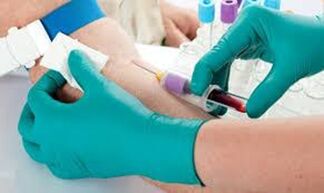Parasites living in the human body cause discomfort of unclear etiology.This can be skin rashes, flatulence, acids, nausea, weakness, anemia, joint pain.Special tests must be performed to clarify the diagnosis.
Parasites that can live in the human body

Classification of parasites in their appearance:
- Lamblia,
- Opistorchi,
- Echinococci,
- Toxocrats,
- Trichinella,
- Askarids.
Representatives of some professions (for the staff of public enterprises, childhood institutions) requires analysis of worm eggs in the design of sanitary books.Children undergo the same analysis when admitting in kindergartens and nursery or in a sports section.
- A classic study of worms living in the gastrointestinal tract is an analysis of stool and scraping the mucosa from the rectum.
- But there are several options for more effective blood tests for parasites, as provided by the method.
Classic worms studies
A classic study of worms living in the gastrointestinal tract (gastrointestinal tract), for example, pincori, ascaris, is an analysis of stools and scraping the mucosa from the rectum.But a single stool analysis may not show positive results, therefore it is advisable to do three times.
- To analyze the stools and scrape, the method of histological coprogram (viewing of the material under the microscope) is used.The effectiveness of research is about 20%, as the likelihood is low that eggs or larvae of parasites will fall into the analyzed material.
- Controversial studies on helminths, simple parasites and fungi in the body are methods of electrical acid.Their essence is to get results using the measurements of bioelectric reactions to active points with electrodes.Special devices are used for this purpose.Many doctors perceive the data on skeptical examination.
- The most informative examination of parasites is a blood test.
Types of blood tests for parasites
There are several options for blood tests for parasites: as provided according to the method.Each of these methods has its own advantages and disadvantages.Depending on the methodology used, the following types of blood tests exist:
- ELISA or blood immunofinins;
- PCR or polymerase chain reaction;
- Hemuscaning;
- Serological blood test.
Elisa, Antibody Analysis and Immunoglobulin
This analysis is based on the immune response of the body, the level of its protective reaction to the invasion of parasites.When antibodies are formed in the human body in response to the entry of a pathogen or just a foreign protein into its blood, they are called immunoglobulins.
- Using ELISA results, you can determine the presence of helminths in the body and their type.The accuracy of the study is much higher than the stool analysis.
- The method is based on the calculation of antibodies in the body to one or the other type of parasites, determining their relationship with foreign antigens (immune response) and the enzyme reaction of the body.
- Antibodies - Antigens indicate the presence of infection.
- Elisa's blood test has accuracy, according to various experts, from 60% to 90% even at low invasion levels.
- The advantage of the method, in addition to a high level of accuracy, is that the immune -functional analysis can be observed from the dynamics of the disease over time.
IFA blood tests for parasites
Antibody analysis looks like a set of signs indicating these antibodies or they are called immunoglobulins.
- A total of 5 of them have been studied - IgG, IgA, IgM, IgE IGD.
- In practical medicine, the first four immunoglobulin is important.
IgM is the main marker of the acute phase of the disease
IgM - the immunoglobulin that occurs in the acute phase of the disease, indicates the onset of the infection.
- Appears in the blood of the fifth day,
- It is detected by analysis after 6 weeks.
- Then he begins to disappear quickly.
IgE - a marker, an indicator of parasite infection
IgE - immunoglobulin indicates the presence of parasites or allergies in the human body.
- is an allergy -related process marker,
- It circulates a little in the blood, based on mucous membranes, macrophages and basophils,
- Participates in the immune responses to parasite infection.
IgG - a marker of disease and immunity
IgG - immunoglobulin, occurs in the process of the disease.
- IgG is also maintained after treatment, for some life infections, such as measles, rubella and others.
- The detection of immunoglobulins in the blood states that the body has already encountered this infection before, with this specific pathogen.
The result of the analysis of the PARSS PARSS
The following conclusions can be drawn for different combinations of pros and cons can be drawn in the blood test:
- Lack of infection - all antibodies with minus;
- Acute stage-GIG (+/-), IgA (+\-), IgM (+);
- Chronic form-GIG (+/-), IgA (-), IgM (-);
- The presence of immunity-GEG (+), IgA (-), IgM (-);
- Exacerbation of chronic disease - IgG (+), IgA (+), IgM (+)
- If the disease is detected and treated, then the shorter values of all antibodies will be achieved only six months after the course of treatment, sometimes after 1-2 years.
The reliability of ELISA analysis
The ELISA method gives the reliability level of 90% to diagnose ascaride infection, pincori (enriobiosis), toxocars and others that cause IgG immunoglobulin to form in large quantities.
- You can determine lambliosis by separate and general (OPD) value at the level of antibodies in the blood.
- OPD value is more than 1 suggesting an infection or has been,
- There is no lamblia with a lower value of 0.85.
- If the value is in the interval, then it is advisable to repeat the analysis after 2 weeks.
This method is characterized by a number of weaknesses.The analysis allows you to determine the level of antibodies developed in the body to neutralize helminths, not the worms themselves.
- Therefore, it is possible to obtain false positive and false negative results.
- This also happens when patients take medication,
- Metabolic disorders and the presence of a parallel of current chronic diseases.
Total blood test, changes in parasite infection
You can indirectly suspect the presence of an invasion by taking a common blood test.As the presence of worms affects the internal organs, the products of their vital activity enter the bloodstream, altering its composition.A partial list of the effects of the invasion effect on the blood parameters:
- increased hemoglobin;
- ESR abnormal indicators;
- unnecessary eosinophils by 20%;
- Zhelezia anemia.
If there are no other causes of such deviations, it is advisable to include a special blood test for parasites, ELISA, PCR in the diagnostic program.
Polymerase chain reaction, PCR analysis
The PCR or polymer chain reaction method is considered to be the main in molecular diagnosis and is one of the most modern and accurate for diagnosis for the presence of parasites in the body.
- It consists in detecting traces of DNA and RNA belonging to parasitic life forms.
- The essence of the polymerase response is the treatment of blood in such a way as to copy and spread the DNA, the RNA of foreign organisms to a concentration that allows them to determine.
Serological blood test
At the same time, the analysis is used as a source of information on blood serum.
- Immunogenic antibodies of parasites are examined.
- The analysis allows you to identify a large number of parasitic forms, but it does not allow you to determine the invasion stage.
- Like the IFA method, serological analysis is indirect for diagnosis.
- If OPD values are high, it is advisable to further undergo faecal analysis.
Diagnosis by a blood scanning method
During the hemoscience on the parasites, a drop of "living" blood of a patient is studied through optical devices in which, in addition to worms, you can determine their larvae and fungi.
How to do a blood test for parasites

The blood donation to parasites is carried out in a specialized laboratory.The blood for the analysis is taken from the elbow vein of 3-5 ml and placed in a dry sterile tube.Before you pass the analysis, it is recommended:
- Do not eat 8 hours;
- In the evening meal, abandon fatty dishes and milk;
- Do not take alcohol and carbonated drinks;
- Avoid excessive exercise, physiotherapy, radiation x -ray;
- Refuse to take medication.
- The abundant drink is welcome.
- PCR blood donation conditions are less strict, since the degree of satiety does not affect the presence of DNA of parasites.
Analysis dates
- IFA results and serological tests are issued within one week.
- For PCR blood tests and hemus, several hours are sufficient.
- With the result of the analysis, you should definitely consult a doctor.
























